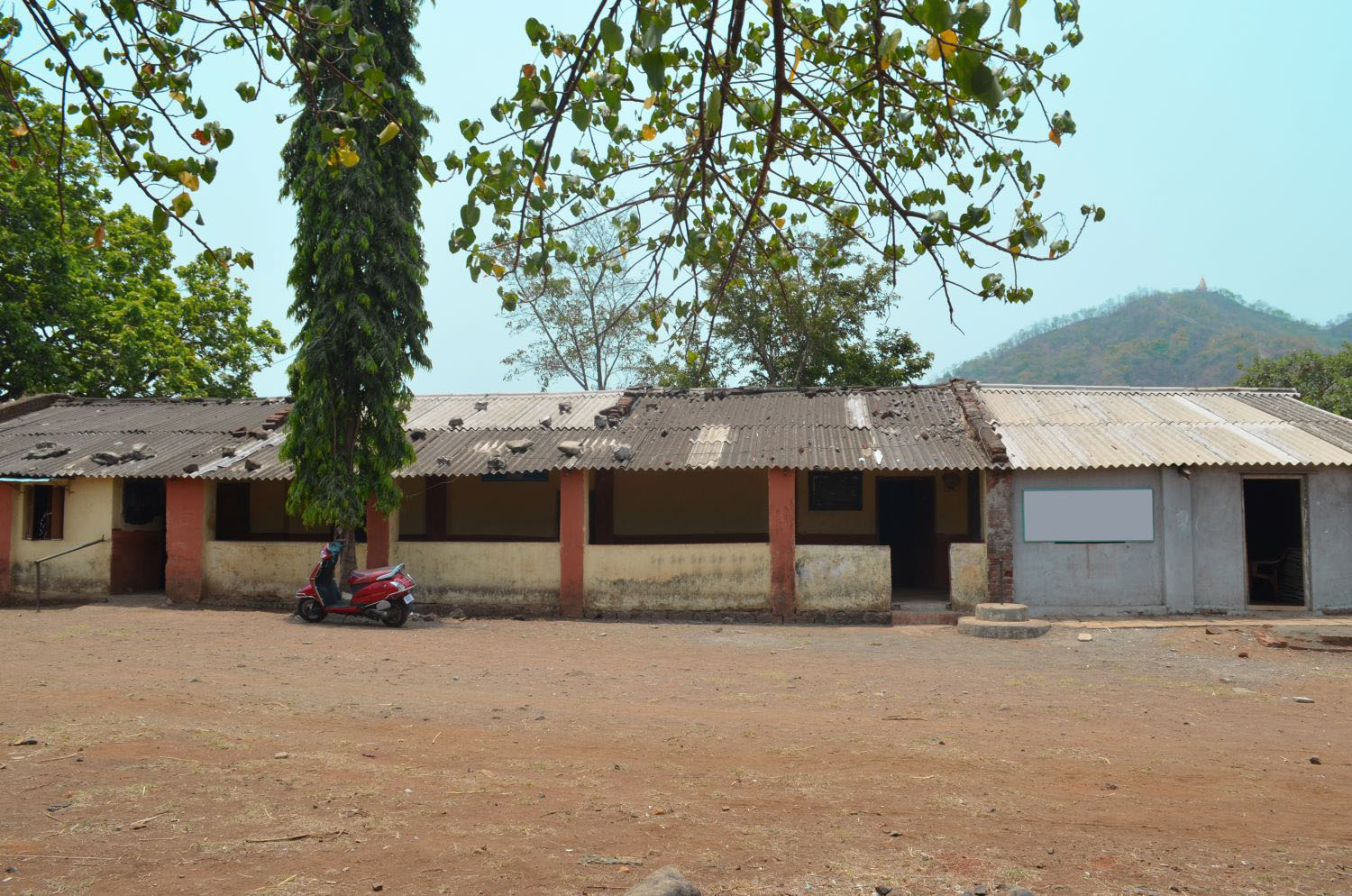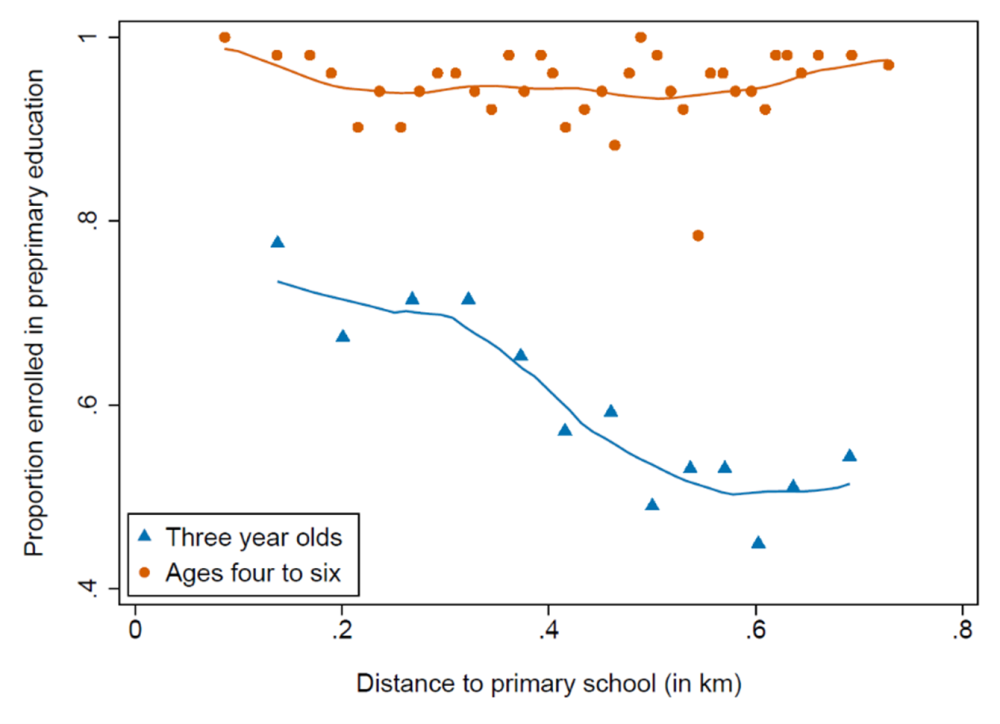Recommended

WORKING PAPERS

Blog Post
A couple of years ago I joked that many development economics papers could be summarized by simply saying “schools: they’re good!”—or as an economist might put it, “the returns to education are positive.” Papers documenting the benefits of education have been at the core of development economics for many years. However, a more recent strand of literature—including important contributions from our team of friendly contrarians here at CGD—suggests that schools in low- and middle-income countries (LMICs) are often not as good as one would like, and that low-quality schools are contributing to a learning crisis that may limit growth and development. In a new paper , my co-authors and I are able to unite these two disparate strands of literature, showing that schools—in this case, government preschools in rural Kenya—are both better than we might think (they impact early childhood development) and not as good as we might hope (they don’t seem to boost long-term human capital).
We study Kenyan preschools that serve children aged (approximately) three to five. There’s a massive body of evidence documenting the impacts of interventions in early childhood in LMICs. One of the key takeaways is that high-quality early childhood education can improve young children’s human capital and set them on a better path in terms of school readiness. However, a lot of our evidence comes from studies of preschools in Latin America, and from recent randomized controlled trials evaluating community-based preschools in African and Asian contexts where limited preprimary education is (or at least, until recently, was) available. There is very little evidence to date on the causal impacts of government schools operated at scale in sub-Saharan Africa. Thus, while many African governments have expanded access to preprimary education in recent years, we have little evidence about the potential impacts of these policies.
We begin to fill this evidence gap by using an instrumental variables strategy to estimate the causal impact of enrolling in preschool on early childhood development among rural children in Kenya. Our research design leverages the fact that children are more likely to go to school when the costs—including time costs—are lower. In our setting, we noticed that parents tended to enroll their children in the local (free government) school at age three rather than age four when they lived very close to the school. The figure below (taken from the paper) illustrates this pattern: school enrollment is almost universal among children aged four to six; but three-year-olds who live 200 meters from a government primary are about 20-25 percentage points more likely to be enrolled in school than three-year-olds who live 600 meters from the same school. However, since these distances are very small—small enough that they hardly matter for adults—we wouldn’t expect households living a few hundred meters closer to the school to differ along other dimensions such as socioeconomic status or parental education (and we find no evidence for this type of selection).
This empirical approach allows us to estimate whether enrolling in school at age three improves child development. To do this, we employ a rich data set containing measures of children’s vocabulary and fine motor skills (which we collected as part of the baseline survey for an early literacy intervention in these communities). We look at three different measures of vocabulary skills: expressive vocabulary (children’s ability to produce words to describe objects or concepts), receptive vocabulary (the ability to understand words) in English, and receptive vocabulary in the children’s mother tongue (Luo). In our setting, the children’s mother tongue is the primary language of instruction in preschool, so we’d expect to see larger impacts on Luo vocabulary than on vocabulary in English (which is the primary language of instruction for children in the later years of primary school).
What do we find?
Among three-year-olds, our results suggest that enrolling in a government preschool has large positive impacts on child development—particularly mother tongue receptive vocabulary, which improves by more than a full standard deviation. We also find suggestive evidence that preschool improves expressive vocabulary and fine motor skills, but our results are imprecisely estimated. We find no evidence that preschool improves English vocabulary—which makes sense, since preschool is taught in Luo rather than English.
Though we find large impacts on three-year-olds, we don’t find evidence that these early gains translate into sustained impacts on child development. Among children aged four to six, almost all of whom are enrolled in preschool, kindergarten, or first grade, we don’t observe any association between distance from the local school and child development outcomes—suggesting that impacts on three year olds likely disappear over time. Why might this be? We can only speculate, but curriculum may be an important factor: children aged four to six who are closer to the school, and hence more likely to have started school at age three rather than age four, are no further along in terms of grade progression—suggestion that four-year-olds entering school for the first time are grouped together with returning students. This highlights an important but too often overlooked aspect of ECD intervention design: the need to build on early gains in child development by teaching children at the appropriate level throughout their educational trajectory.
So, what are the takeaways? First, our evidence suggests that even business-as-usual early childhood education in government schools in Kenya can have substantial positive impacts on young children. Schooling is not always synonymous with learning, but in this case enrolling in preschool leads to large increases in mother tongue vocabulary. Second, for schooling and learning in early childhood to translate into persistent impacts on human capital, schools and curricula need to be even better—building on early learning gains with appropriately designed content as children get older. We know that in Kenya there are early childhood and early primary programs that can substantially improve on the learning gains provided by existing government preschools. The challenge is not just to find programs that work, but to sequence them so as to create lasting impacts on the human capital of the next generation.
Disclaimer
CGD blog posts reflect the views of the authors, drawing on prior research and experience in their areas of expertise. CGD is a nonpartisan, independent organization and does not take institutional positions.
Image credit for social media/web: forcdan / Adobe Stock






